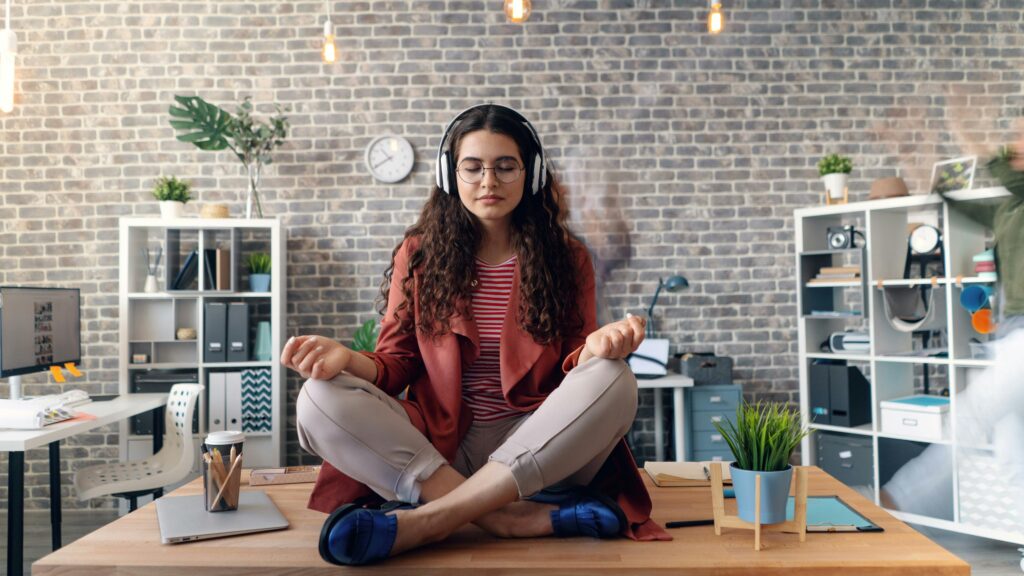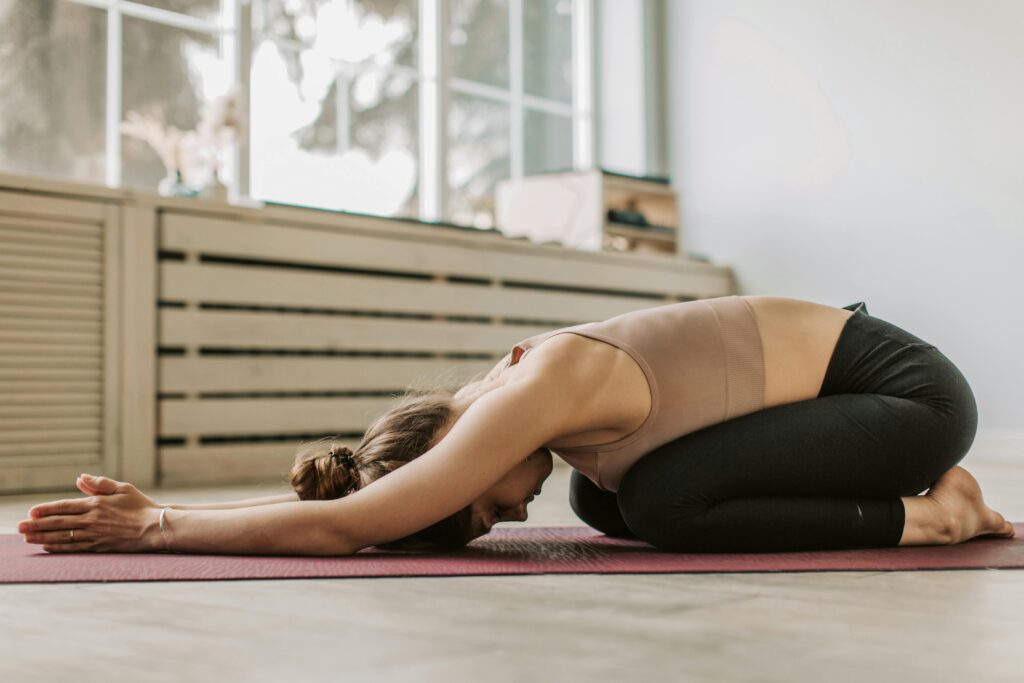Table of Contents
Introduction
Incorporating Yoga into Daily Life:In today’s fast-paced world, many individuals struggle to balance work, family, and personal time, often neglecting self-care practices. Physical exercise, in particular, is one of the most neglected aspects of personal wellness due to time constraints and the hectic nature of daily schedules. However, there is a solution that doesn’t require hours at the gym or complex routines—yoga.
Yoga is an ancient practice that has been used for thousands of years to promote physical health, mental well-being, and emotional stability. One of the most attractive aspects of yoga is that it can be easily incorporated into any daily routine, regardless of how busy someone’s life may be. Whether it’s a quick 10-minute stretch in the morning or a full-body flow at the end of the day, incorporating yoga into daily life can lead to a more balanced, healthy, and fulfilling lifestyle.
In this article, we will explore how to incorporate yoga into your daily routine with simple tips and practical strategies. Additionally, we’ll discuss how yoga can be adapted to fit even the busiest schedules, making it a realistic option for anyone who is seeking better health and a sense of peace amidst their chaotic life.

The Power of Yoga – Why It’s Important to Incorporate Yoga into Daily Life
Yoga offers a myriad of benefits, both physical and mental, which makes it an invaluable tool in today’s world. Whether you are looking to relieve stress, build strength, improve flexibility, or cultivate mindfulness, yoga can do it all.
Physical Benefits of Yoga
Yoga is a low-impact exercise that targets flexibility, strength, and posture. Regular practice can help increase range of motion, improve circulation, reduce the risk of injuries, and enhance balance. Many people use yoga to manage chronic pain, such as back, neck, and joint pain, as it gently stretches and strengthens the muscles around these areas, providing relief.
Examples of Physical Benefits:
- Increased Flexibility: Poses like Downward Dog and Forward Fold lengthen the muscles and improve overall flexibility.
- Better Posture: Certain yoga poses, such as Mountain Pose and Cobra, help strengthen the core and back muscles, promoting better posture throughout the day.
- Joint Health: Yoga can improve the lubrication of joints, reducing stiffness and providing relief from conditions like arthritis.
Mental Benefits of Yoga
Yoga isn’t just about physical movement; it also provides profound mental benefits. The focus on breathing, mindfulness, and meditation during yoga practice helps to calm the mind and improve mental clarity. Many practitioners find that yoga helps reduce anxiety, stress, and mental fatigue by promoting a state of relaxation.
Examples of Mental Benefits:
- Stress Reduction: Through deep breathing techniques and gentle movements, yoga activates the parasympathetic nervous system, which reduces stress and promotes relaxation.
- Improved Concentration and Focus: The practice of focusing on breath and body awareness can improve mental clarity, concentration, and cognitive function.
- Emotional Balance: Yoga encourages mindfulness, which can help individuals navigate their emotions, leading to greater emotional stability.
Emotional Well-being
Yoga has a profound effect on emotional health. It helps individuals to cultivate awareness of their thoughts and emotions, leading to increased self-acceptance and reduced negative thinking. This emotional balance enhances overall well-being and allows for greater happiness.
Examples of Emotional Benefits:
- Increased Self-Awareness: Yoga encourages self-reflection, helping you become more aware of your emotional triggers and responses.
- Emotional Release: Certain yoga poses, like Child’s Pose or forward bends, can help release stored emotions in the body, leading to emotional healing and stress relief.
Understanding Yoga Routine for Busy Schedules
A common misconception about yoga is that it requires long hours of practice to be effective. While it’s true that yoga can be quite extensive, especially in certain styles like Vinyasa or Ashtanga, the beauty of yoga lies in its adaptability.
Even if you have just 10-15 minutes to spare in your day, you can still experience the physical, mental, and emotional benefits of yoga.
Overcoming the Time Barrier
One of the most significant barriers to adopting yoga is time. People with demanding jobs or family responsibilities often feel there’s no time for a full yoga session. The truth is, yoga doesn’t require hours of dedication.
Instead, short and intentional yoga practices can fit into almost any schedule, providing both mental and physical benefits.
Strategies for a Busy Schedule:
- Micro Sessions: If you can only spare 5 to 10 minutes, incorporate short yoga practices throughout the day. For instance, doing a quick Sun Salutation sequence in the morning or some seated stretches during a lunch break can refresh and re-energize you.
- Use Technology: Many apps and online platforms offer quick yoga routines designed for busy people. These can guide you through 10-minute flows, focusing on different areas such as stress relief, flexibility, or energy boost.
How to Incorporate Yoga into Your Daily Routine
Incorporating yoga into your daily life involves creating small habits that support your physical and mental well-being. With a little intention, you can seamlessly integrate yoga into your day, regardless of your busy lifestyle.
Morning Routine
Morning yoga can be a powerful way to start the day. It energizes the body, awakens the muscles, and sets a positive tone for the rest of the day. A morning practice doesn’t need to be extensive—just 10-20 minutes of movement can leave you feeling grounded and focused.
Suggested Poses for the Morning:
- Sun Salutations: A sequence of flowing movements that stretches the entire body, invigorates the muscles, and awakens the mind.
- Seated Forward Fold: Stretches the hamstrings and relieves tension in the lower back.
- Cat-Cow Stretch: Loosens the spine and releases tension in the neck and shoulders.


Yoga During Work Hours
Even during a busy workday, you can take short breaks for yoga. Sitting at a desk for long hours can lead to stiffness, poor posture, and mental fatigue. Desk yoga offers a simple solution.
Examples of Desk Yoga Poses:
- Seated Twist: Relieves tension in the spine and neck.
- Neck Rolls: Eases tension in the neck and shoulders.
- Wrist and Finger Stretches: Helps alleviate discomfort from typing.
You can also practice deep breathing exercises or meditation during breaks to reduce stress and increase focus.
Evening Routine
An evening yoga practice can be the perfect way to unwind after a long day. It helps release accumulated tension, promote relaxation, and prepare the body for restful sleep.
Suggested Poses for the Evening:
- Child’s Pose: A restorative pose that helps calm the nervous system and release tension in the back and hips.
- Legs Up the Wall: A restorative pose that promotes circulation and helps calm the mind.
- Gentle Forward Fold: Releases tension in the lower back and hamstrings.


Tips for Staying Consistent with Your Yoga Practice
Building a consistent yoga practice doesn’t require perfection; it requires commitment and consistency. The key to maintaining a yoga practice is setting realistic goals, staying motivated, and making yoga a part of your routine.
Setting Realistic Goals
Start small and set achievable goals. For example, commit to practicing yoga for 10 minutes each day for a week, then gradually increase the duration as you feel comfortable.
Tracking Progress
Tracking your yoga practice can help you stay accountable. You can keep a journal or use an app to track your sessions. Notice improvements, like increased flexibility, reduced stress, or better sleep, to keep yourself motivated.
Create a Dedicated Yoga Space
Designating a specific area for your yoga practice can make the experience feel more intentional. Even if it’s a small corner in your living room, creating a peaceful space can enhance your focus and calm.
Use Yoga Apps and Online Resources
Apps and websites like Yoga with Adriene, Daily Yoga, or MyYogaPal offer structured, easy-to-follow classes for all skill levels. These resources can guide you through short or long sessions, making it easier to stay on track.
Combining Yoga with Other Healthy Habits for Holistic Wellness
Yoga is just one piece of the wellness puzzle. It works best when combined with other healthy habits like mindful eating, staying hydrated, and practicing good sleep hygiene.
Mindful Eating
Yoga encourages mindfulness, and this extends to eating as well. Practicing mindful eating means being fully present during meals, savoring each bite, and paying attention to how food makes you feel. This practice can help improve digestion and prevent overeating.
Proper Hydration
Yoga emphasizes balance in all aspects of life, including hydration. Drinking plenty of water helps keep your muscles hydrated and supports your overall health. Yoga also encourages mindful drinking, paying attention to how much water you consume and when.
Yoga and Mental Health
Yoga’s connection to mental health is one of its most significant benefits. Yoga helps to regulate the nervous system, reducing stress and promoting a calm, balanced mental state. Combining yoga with mindfulness practices, like journaling or meditation, enhances emotional resilience and mental clarity.


Common Challenges and How to Overcome Them
While incorporating yoga into your daily routine is beneficial, there are obstacles that many people face. These challenges can include lack of time, motivation, or a suitable space for practice. Here are some solutions to help overcome these common barriers:
Time Constraints
If time is an issue, break your practice into smaller, manageable sessions throughout the day. You can practice yoga for 5-10 minutes in the morning, take a short break during work, and then do another quick session in the evening. These shorter sessions can be just as effective as longer ones.
Motivation
To stay motivated, consider joining a yoga class or finding an accountability partner. It’s often easier to stay committed when you have someone to practice with.
Lack of Space
You don’t need a large room to practice yoga. A small area in your living room or bedroom is enough. Consider using a yoga mat and some props, like blocks or straps, to support your practice.
Real-Life Success Stories of Incorporating Yoga into Busy Lifestyles
Many individuals have found success in incorporating yoga into their daily routines, even with busy schedules. For example, a working professional who starts the day with a short meditation and some basic stretches finds that it improves productivity and reduces stress throughout the day. Another person might incorporate yoga into their lunch break, using simple breathing exercises and stretches to release the tension of the morning.
These real-life stories highlight that yoga isn’t just for the “flexible” or the “zen.” It’s for anyone looking to improve their physical, mental, and emotional health, regardless of their busy lifestyle.
The Long-Term Benefits of a Yoga Practice
The benefits of yoga compound over time. Regular practice leads to long-term improvements in flexibility, strength, mental clarity, and emotional stability. Yoga fosters a healthier lifestyle by promoting better habits, such as mindful eating and regular exercise.
In the long run, those who incorporate yoga into their daily lives tend to experience better physical health, more energy, improved mood, and a sense of balance and calm in their daily routines.
Conclusion: Embracing Yoga for a Healthier, Balanced Life
Incorporating yoga into daily life is one of the most effective ways to enhance both physical and mental well-being. It’s not about finding hours of free time or mastering difficult poses. Instead, it’s about committing to small, intentional practices that foster balance and health.
